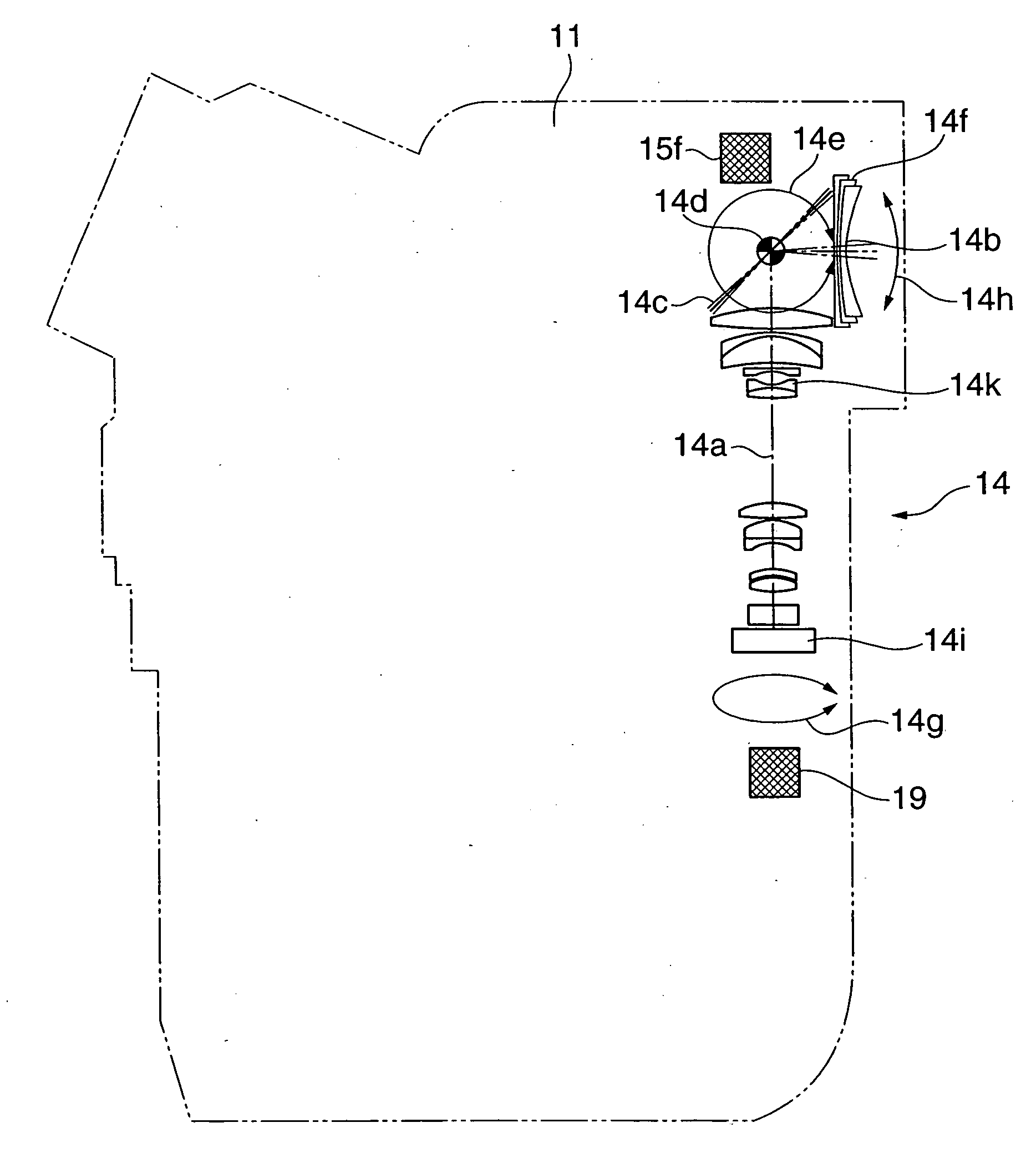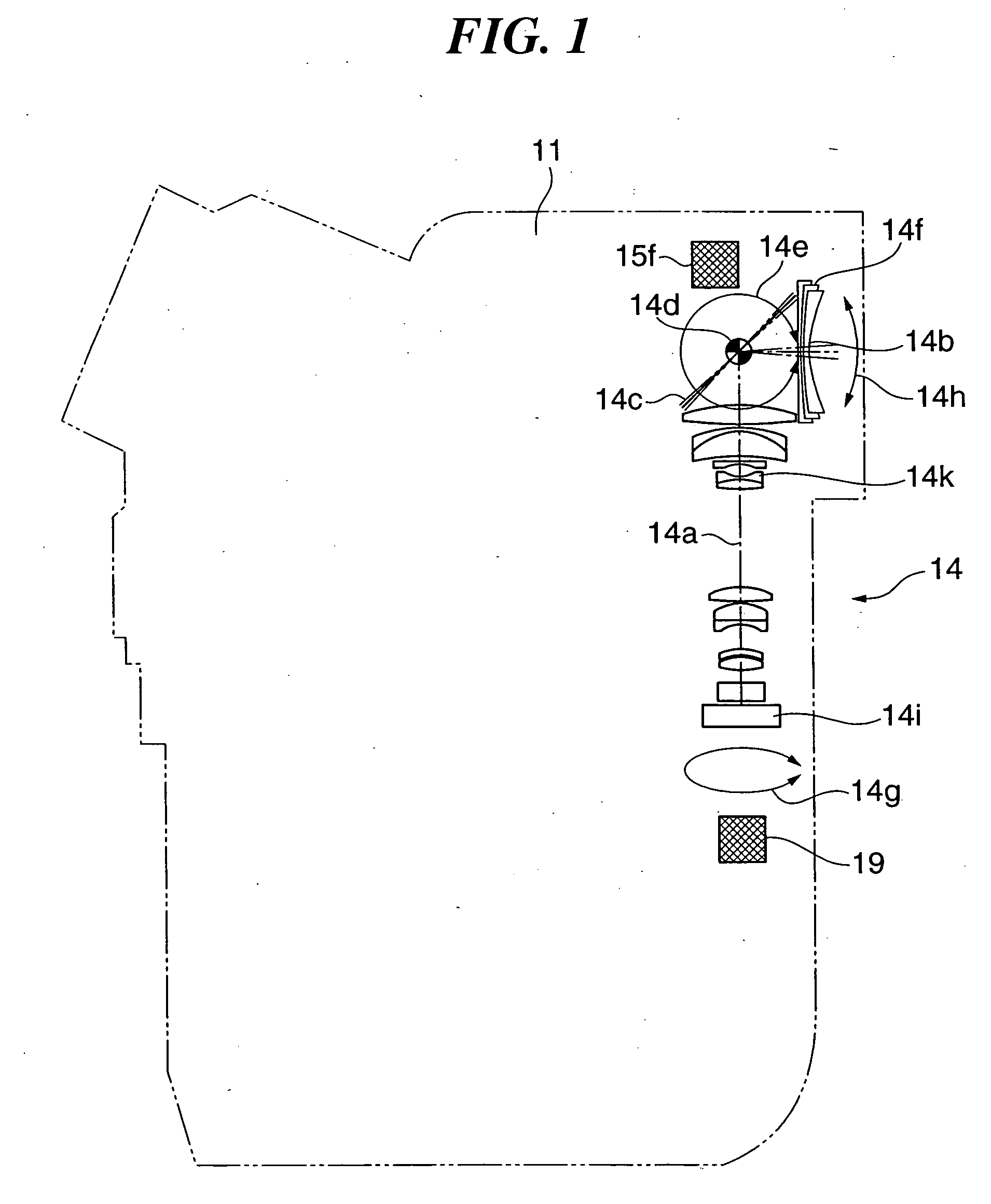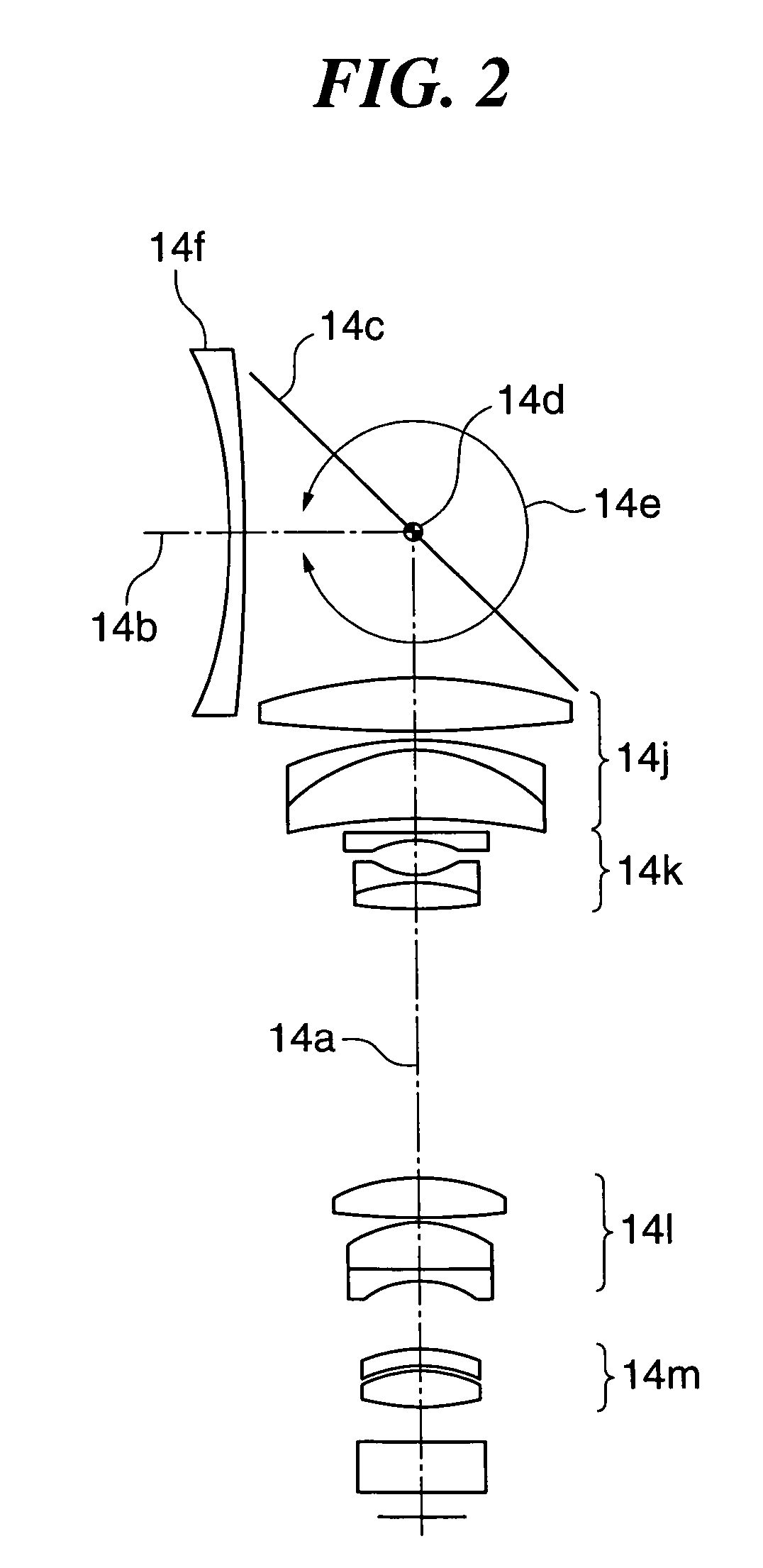Photographing apparatus and control method therefor
a technology of photographing and control method, which is applied in the field of photographing apparatus, can solve the problems of inability to maintain the speed of photographing, degradation of image quality, and inability to fully automate the operation of photographing, and achieve the effect of compact size and convenient handling
- Summary
- Abstract
- Description
- Claims
- Application Information
AI Technical Summary
Benefits of technology
Problems solved by technology
Method used
Image
Examples
first embodiment
[0083]FIG. 1 is a schematic view showing the whole construction of a video camera as a photographing apparatus according to the present invention.
[0084] As shown in FIG. 1, a video camera body 11 is provided with a bending optical system 14 accommodated therein. In the video camera body 11, a main optical axis 14a of the bending optical system 14 extends in a vertical direction (along an axis approximately orthogonal to the horizontal plane on which the video camera is placed), bends (i.e. the direction of the main optical axis changes) at a mirror (reflection surface) 14c, and further extends from the mirror 14c toward an object. An angle formed by the main optical axis 14a and an object optical axis 14b (a part of the main optical axis 14a closer to the object with respect to the mirror 14c) changes according to the rotational position of the mirror 14c. When the mirror 14c is in its initial position, the angle formed by the two optical axes is 90 degrees. Object light having ente...
second embodiment
[0189] Next, a description will be given of the present invention.
[0190] The second embodiment is distinguished from the first embodiment described above only in the constructions of a tilting drive linkage and a panning drive linkage employed therein.
[0191]FIGS. 16A and 16B are views showing the tilting drive linkage of a photographing apparatus according to the second embodiment. The tilting drive linkage is a mechanism that drives the mirror 14c and the front lens 14f in unison. FIG. 16A is a side view of the tilting drive linkage as viewed from the bending optical system shown in FIG. 2, and FIG. 16B is a top plan view of the tilting drive linkage.
[0192] In FIGS. 16A and 16B, the front lens support frame 15a holding the front lens 14f is supported by the shaft 14d such that the front lens support frame 15a can rotate about the shaft 14d in the directions indicated by the double-headed arrow 14e along with the front lens 14f.
[0193] A front lens support frame pulley 15g is fixe...
third embodiment
[0204] Next, a description will be given of the present invention.
[0205] The third embodiment is distinguished from the above described first embodiment only in the construction of a tilting drive linkage and an electrical system configuration employed therein.
[0206]FIGS. 18A to 18C are views showing the tilting drive linkage of a photographing apparatus according to the third embodiment. The tilting drive linkage is a mechanism that drives the mirror 14c and the front lens 14f in unison. FIG. 18A is a side view, partly in section, of the tilting drive linkage as viewed from the bending optical system shown in FIG. 2, FIG. 18B a top plan view of the tilting drive linkage, and FIG. 18C a fragmentary view showing in detail a part of the tilting drive linkage.
[0207] In FIGS. 18A and 18B, the tilting drive linkage is different from the tilting drive linkage in FIGS. 5A and 5B in that the transmission lever 17a as a device for operating the front lens support frame 15a and the mirror s...
PUM
 Login to View More
Login to View More Abstract
Description
Claims
Application Information
 Login to View More
Login to View More - R&D
- Intellectual Property
- Life Sciences
- Materials
- Tech Scout
- Unparalleled Data Quality
- Higher Quality Content
- 60% Fewer Hallucinations
Browse by: Latest US Patents, China's latest patents, Technical Efficacy Thesaurus, Application Domain, Technology Topic, Popular Technical Reports.
© 2025 PatSnap. All rights reserved.Legal|Privacy policy|Modern Slavery Act Transparency Statement|Sitemap|About US| Contact US: help@patsnap.com



